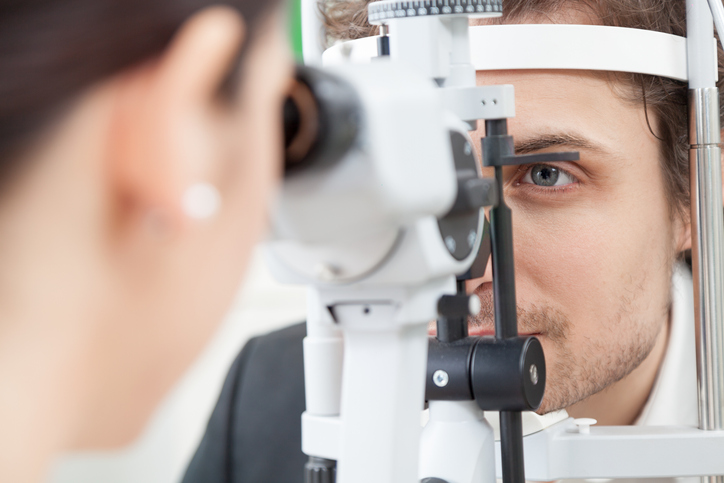For those who receive regular eye exams, a part of the testing is often eye dilation. It’s a familiar process for many of us who wear glasses. Here’s how my most recent appointment went. Dilating eye drops were dropped into my eyes. After about 20 minutes or so my pupils fully opened. My eyes are blue so they open faster than those that are darker. For darker eyes, it can take around 30 minutes, depending on the type of eye drops used.
Once dilated, my vision was very blurry, especially when I tried to focus on close objects. I was also very sensitive to light. Once I walked outside of the office after my appointment, the light sensitivity was very disorienting. I couldn’t drive after my appointment so I had to hitch a ride home. My ophthalmologist said he tested the pressure in my eyes and my peripheral vision to see if there were any signs of glaucoma. At this time there were not, but I have a family history of glaucoma, which is one of the risk factors for diagnosis.
Glaucoma is more common in individuals over 60 years of age and is more common for those who are African American or Hispanic/Latino and over age 40. Diagnosis is usually of the open-angle glaucoma type, but there are many other variations of the condition. There are two categories of glaucoma, including what is called primary and secondary glaucoma. Besides open-angle glaucoma, primary glaucoma types include: normal-tension glaucoma, angle-closure glaucoma, and congenital glaucoma. Secondary glaucoma covers diagnoses called neovascular, pigmentary, exfoliation, and uveitic.
What is interesting is that glaucoma can happen in one or both eyes. And, glaucoma doesn’t always correlate with high eye pressure, since what normal eye pressure is for one person isn’t normal for another. Many people, however, don’t have any symptoms of glaucoma. Symptoms are often very slight and include progressive vision loss associated with peripheral vision. Treatments for glaucoma are surgery, medicine, and laser treatment. If left untreated the loss can result in blindness. Treatments vary in their success, which is why job accommodations are often an important part of the workplace for individuals with glaucoma.
Let’s look at a couple recent examples of employees who used reasonable accommodation to improve their productivity.
- Ally, a clerk at a mail facility, was recently diagnosed with glaucoma. Enlarging the print on her computer screen helped, but she had difficulty completing money orders and reading prepaid mail envelopes and shipping containers. To assist Ally, her employer provided her with a hand and stand magnifier.
- Shane recently asked to bring a service dog to work with him. He is a marketing manager with progressive glaucoma who now has only a limited field of vision. Shane takes public transportation during his commute to and from work, and he often attends business meetings in the district where he works.
- Huang worked in a cubicle with fluorescent overhead lights. Because of glaucoma, he became very sensitive to light. His employer accommodated him with a cubicle roof and filters in fluorescent light fixtures.
For more information on impairments resulting in low vision and accommodations for low vision, limited visual field, and photosensitivity, see:


